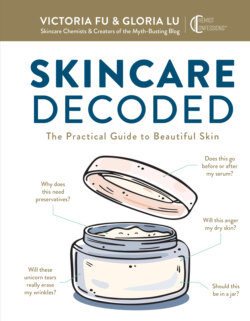Читать книгу Skincare Decoded - Victoria Fu - Страница 48
ОглавлениеSKINCARE DECODED • 54 MOISTURIZERS • 55
There are other forms of HA that are much smaller. Some studies suggest
that smaller HAs can penetrate the skin to plump, hydrate, and even bring
anti-aging benefits. However, some people can be sensitized by these
small HAs. So, as we always say: Patch-test, patch-test, patch-test (Chemists’
Commandment #9).
Emollients and Face Oils
Over the years, face oils have gained a lot of popularity, and every brand
is brewing its own version. You’ll find that they all seem to be 100% pure,
100% organic, 100% potent, and 100% exaggerated. Regardless of the claims,
face oils are a great addition to your routine to boost nourishment, add glow
“X% OF PEOPLE AGREE, SKIN FEELS MOISTURIZED” “STAY MOISTURIZED
FOR 24 HOURS!” “SKIN IS 75% MORE HYDRATED!”
Do these common moisturizer claims sound like random numbers yanked out of some
marketing exec’s behind? It turns out these claims are actually backed up by scientific studies.
Most moisturizer studies look at two values: hydration and TEWL.
Hydration is measured by a corneometer; this handheld device tracks skin’s dielectric (insulative
or nonconductive) properties, and reports hydration as a percentage. In a study, you’d typically
measure this value on clean skin, moisturized skin, and skin several hours after product application
to assess how hydrating a product is.
Remember: TEWL (pronounced like tool) stands for Transepidermal water loss. As the name
suggests, it’s how much water evaporates out of your skin. The higher the TEWL rating, the worse
the skin barrier. This is a really useful way to test several different claims. For example, the tester
may purposely damage a patch of skin to create an area with a high TEWL, then apply a particular
cream to bring the value back down. Neat, eh?
DECODE That Claim
